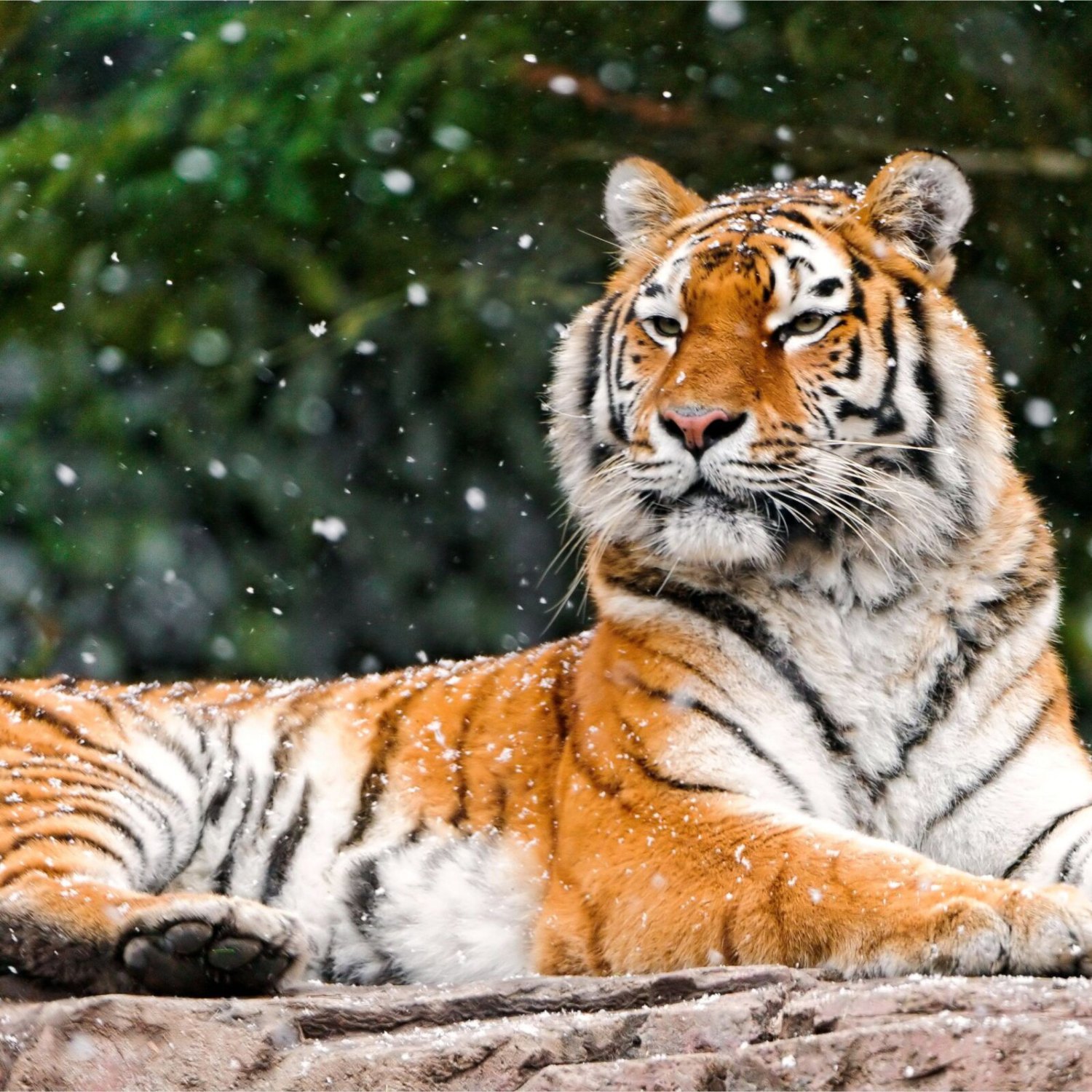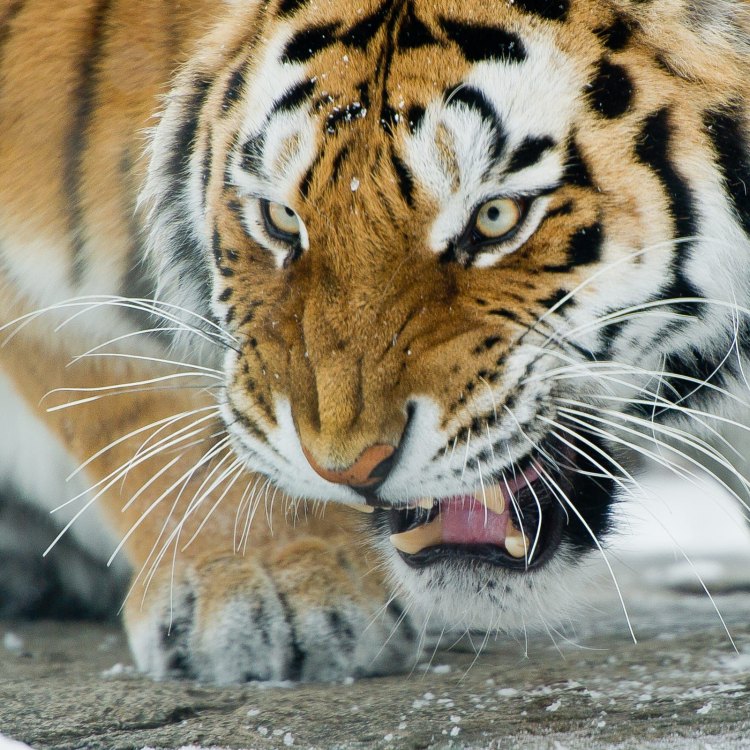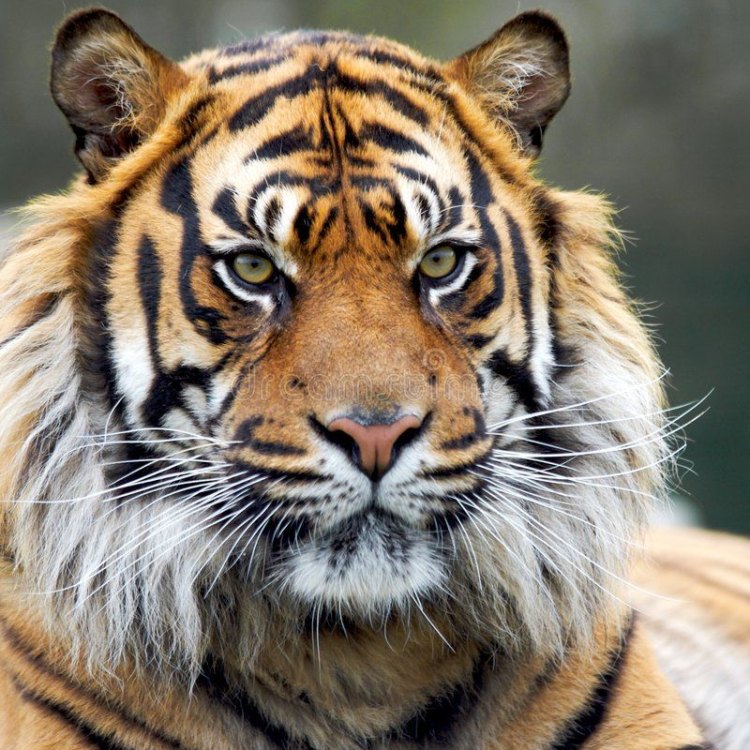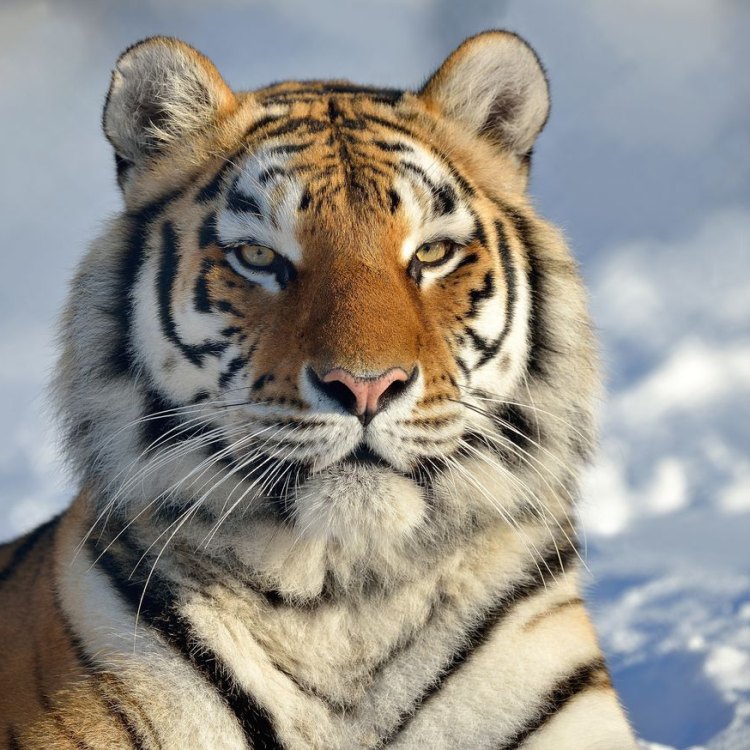
Siberian Tiger
Up to 3.3 meters (10.8 feet)
The Siberian Tiger, also known as the king of the taiga, is the largest cat in the world. They can grow up to 10.8 feet in length and are found in Primorsky Krai, Khabarovsk Krai, and Amur Oblast. With a powerful and muscular body shape, they are expert hunters. This beautiful and rare feline belongs to the family Felidae. #SiberianTiger #Wildlife #Felidae #PowerfulPredator
Animal Details Summary:
Common Name: Siberian Tiger
Kingdom: Animalia
Habitat: Forests, taiga, and grasslands
The Magnificent Siberian Tiger: The Largest and Most Iconic Cat in the World
One of the most majestic and iconic animals in the world is the Siberian Tiger, also known as the Amur Tiger or the Ussuri Tiger. It is the largest of all the cats in the world, standing tall and proud with its beautiful orange fur and distinct black stripes. These magnificent creatures are a source of fascination and awe, with their powerful and muscular body, sleek movements, and fierce hunting skills.The scientific name for the Siberian Tiger is Panthera tigris altaica, and it belongs to the kingdom Animalia, phylum Chordata, and class Mammalia Siberian Tiger. It is a member of the Felidae family, which includes all species of cats.
Habitat and Geographical Distribution
Siberian Tigers are native to Northeast Asia, primarily found in the country of Russia. They can be found in the Primorsky Krai, Khabarovsk Krai, and Amur Oblast regions of Russia. They prefer cold and snowy climates, making the forests, taiga, and grasslands of these regions the ideal habitat for them.These magnificent creatures also have a wide geographical distribution and can be found in other parts of Russia, as well as China and North Korea. However, their numbers have decreased significantly in these countries due to hunting and habitat loss.
Appearance and Body Shape
Siberian Tigers are known for their stunning appearance, with their bright orange fur and distinct black stripes. Their fur is also thicker and longer than other tiger species, allowing them to survive in the cold climates of their habitat.In addition to their striking coloration, these tigers also have a powerful and muscular body Saiga. They can weigh up to 660 pounds and stand at a height of 3.3 meters (10.8 feet). Their stocky build, large paws, and sharp claws make them perfectly adapted for their life in the wild.
Feeding Method
Like all other tiger species, Siberian Tigers are carnivorous animals. They hunt for their food, which primarily consists of deer, wild boars, and small mammals such as rabbits and hares. They are also known to hunt large prey such as moose and elk, making them apex predators in their habitat.These tigers are solitary hunters and use their excellent hunting skills to capture their prey. They are known for their stealth and can move silently through the forests, using their camouflage to their advantage.
Threats to Their Population
The Siberian Tiger has faced many threats over the years, which have led to a significant decrease in their population. The most significant threat to these magnificent creatures is poaching, as their bones, skins, and other body parts are in high demand in the illegal wildlife trade. Despite strict laws and conservation efforts, poaching still remains a significant threat to their survival.Habitat loss is another major factor contributing to the decline in their population. As human populations continue to expand, more and more of their natural habitat is converted into agricultural or urban areas. This results in the fragmentation of their territory and decreases their access to food and potential mates.
Climate change is also a significant concern for the Siberian Tiger. As their habitat gets warmer, their natural prey may migrate to other areas, making it harder for these tigers to find food. It also affects the availability of water and prey, ultimately impacting the entire ecosystem.
Conservation Efforts
In response to the declining population of Siberian Tigers, various conservation efforts have been put in place. These include strict anti-poaching laws, habitat protection, and efforts to raise awareness about these magnificent creatures.One significant success story is the Amur Tiger Center in Russia, which has been at the forefront of conservation efforts for the Siberian Tiger. They have implemented various conservation projects, such as reducing poaching and protecting habitat, that have resulted in an increase in the tiger population. In 2005, there were only about 330 tigers left in the wild, but today, their population has almost doubled to an estimated 500.
Conclusion
The Siberian Tiger is not just a majestic and beautiful animal, but also an essential part of the ecosystem. They are crucial for maintaining the balance of their habitat, and their survival is critical for the survival of other species in the region.It is up to us, as a society, to protect these magnificent creatures and ensure their survival for generations to come. By supporting and promoting conservation efforts and raising awareness about the threats they face, we can help secure a better future for the Siberian Tiger. Let us celebrate the beauty and grace of this iconic cat and work towards a world where they can thrive in their natural habitat.

Siberian Tiger
Animal Details Siberian Tiger - Scientific Name: Panthera tigris altaica
- Category: Animals S
- Scientific Name: Panthera tigris altaica
- Common Name: Siberian Tiger
- Kingdom: Animalia
- Phylum: Chordata
- Class: Mammalia
- Order: Carnivora
- Family: Felidae
- Habitat: Forests, taiga, and grasslands
- Feeding Method: Carnivorous
- Geographical Distribution: Northeast Asia
- Country of Origin: Russia
- Location: Primorsky Krai, Khabarovsk Krai, and Amur Oblast
- Animal Coloration: Orange with black stripes
- Body Shape: Powerful and muscular
- Length: Up to 3.3 meters (10.8 feet)

Siberian Tiger
- Adult Size: Males: 250-360 kg (550-794 lbs), Females: 180-275 kg (396-606 lbs)
- Average Lifespan: 10-15 years in the wild, up to 25 years in captivity
- Reproduction: Sexual
- Reproductive Behavior: Polygamous
- Sound or Call: Roaring
- Migration Pattern: No significant migrations
- Social Groups: Solitary
- Behavior: Excellent swimmers and climbers
- Threats: Habitat loss, poaching, and illegal wildlife trade
- Conservation Status: Endangered
- Impact on Ecosystem: Keystone species
- Human Use: Zoos and conservation programs
- Distinctive Features: Large size and striped fur pattern
- Interesting Facts: The Siberian tiger is the largest tiger species and one of the biggest cats in the world.
- Predator: No natural predators

Panthera tigris altaica
The Majestic Siberian Tiger: A Threatened Beauty
The Siberian tiger, also known as the Amur tiger, is a magnificent and powerful creature that roams the temperate forests of eastern Russia and parts of northeast China. This largest and most iconic subspecies of tiger is known for its striking appearance, fierce behavior, and crucial role in its ecosystem. Unfortunately, like many other wild animals, the Siberian tiger is facing threats that endanger its existence.In this article, we will delve deeper into the world of the Siberian tiger, exploring its unique features, behavior, and the challenges it faces in its natural habitat PeaceOfAnimals.Com.
Appearance and Size
One of the most distinctive features of the Siberian tiger is its size. Males can reach an average weight of 250-360 kg (550-794 lbs), while females are slightly smaller, weighing 180-275 kg (396-606 lbs). This makes the Siberian tiger the largest tiger species and one of the biggest cats in the world. They also have longer and thicker fur than other tiger species, with a striking pattern of dark stripes on an orange-brown coat, providing excellent camouflage in the forest.The Siberian tiger's large size and unique fur pattern play an essential role in its survival. Its massive size makes it an apex predator, meaning it has no natural predators in its habitat, making it the king of the forest.
Life Cycle and Behavior
Like most big cats, the Siberian tiger is a solitary animal, except during mating season and when raising offspring. They prefer to roam, hunt, and live alone, marking their territory with scent markings and loud roars, which can be heard up to two miles away. Males have a larger territory than females, and their paths may overlap, but conflicts between them are rare Spider Monkey.Siberian tigers are excellent swimmers and climbers, making them versatile hunters. They are known to swim across freezing rivers to reach their prey, and they also climb trees to get a better view of their surroundings.
Reproduction and Communication
The Siberian tiger is a sexually reproducing animal, with a polygamous mating behavior in the wild. Males will advertise their presence by marking their territory and roaring, attracting females for mating. The mating season usually starts in late January or early February, and the gestation period lasts for about three and a half months.The cubs are usually born in litters of two to three, and they stay with their mother until they are about two to three years old. During this time, the mother will fiercely protect and teach her cubs how to hunt. After that, the cubs will leave their mother's territory to establish their own.
Threats and Conservation Status
Despite their powerful presence, Siberian tigers are facing significant threats, mainly due to human activities. The main threat to their existence is habitat loss, as human development and deforestation continue to encroach on their territory. This leads to a loss of prey and disrupts the tiger's natural behavior, causing them to come into conflict with humans.Another major threat to Siberian tigers is poaching and illegal wildlife trade. Their fur, bones, and other body parts are highly prized in traditional medicine, particularly in China and other Asian countries. This demand has caused a sharp decline in their population, with an estimated 400-500 Siberian tigers left in the wild.
Because of these threats, the Siberian tiger is listed as endangered on the IUCN Red List, and efforts are being made to protect and conserve this majestic species. The Russian government has established several protected areas for the Siberian tiger, and efforts have been made to reduce human-tiger conflicts through education and awareness programs. Additionally, international organizations, such as the World Wildlife Fund, are working towards preserving the Siberian tiger's habitat and combating illegal wildlife trade.
The Siberian Tiger as a Keystone Species
The Siberian tiger plays a vital role in its ecosystem, making it a keystone species. This means that its presence and behavior significantly impact the entire ecosystem. As an apex predator, the tiger regulates prey populations, preventing overgrazing and maintaining a healthy balance in the forest. They also play a role in seed dispersal and help maintain the overall health of the forest.If the Siberian tiger were to disappear, it would have devastating effects on the entire ecosystem. It is, therefore, crucial to protect and preserve this species for the benefit of the entire ecosystem.
Human Use and Conservation Programs
The beauty and strength of the Siberian tiger have also made it a popular attraction in zoos worldwide. Zoos play a critical role in educating the public about the importance of conservation and the threats that tigers face in the wild. They also participate in conservation programs, such as captive breeding, which helps in increasing the population and genetic diversity of the species.Conservation programs, both in captivity and in the wild, are essential for the survival of the Siberian tiger. These programs involve monitoring and studying the population, habitat, and behavior of the tigers, implementing measures to protect them from threats, and educating the public about the importance of preserving this species.
Interesting Facts about the Siberian Tiger
- The Siberian tiger is one of the most endangered tiger subspecies, with a wild population estimated to be less than 500.- There are believed to be more Siberian tigers in zoos than in the wild.
- Due to their thick and long fur, Siberian tigers are well adapted to survive in cold climates, and they can withstand temperatures as low as -58°F (-50°C).
- The stripes on a tiger's coat are unique to each individual, much like human fingerprints.
- Tigers are excellent athletes, capable of reaching speeds of up to 60 km/h (37 mph) and jumping up to 5 meters (16 feet) in one leap.
- Unlike most cats, tigers love water and are excellent swimmers, using their powerful paws to paddle through rivers and lakes.
Facing the Threats Together
The Siberian tiger is not only a beautiful and powerful creature but also a crucial part of its ecosystem. Its presence and behavior directly impact the well-being of the forest and its inhabitants. Unfortunately, due to human activities, this magnificent species is facing severe threats that put it at risk of extinction.But, with efforts being made to protect and preserve the Siberian tiger, there is still hope for its survival. It is up to all of us to educate ourselves and others, spread awareness, and work together to ensure a future where wild tigers can continue to roam freely in their natural habitat. Let us do our part to protect this threatened beauty and ensure the survival of this apex predator for generations to come.

The Magnificent Siberian Tiger: The Largest and Most Iconic Cat in the World
Disclaimer: The content provided is for informational purposes only. We cannot guarantee the accuracy of the information on this page 100%. All information provided here may change without prior notice.












